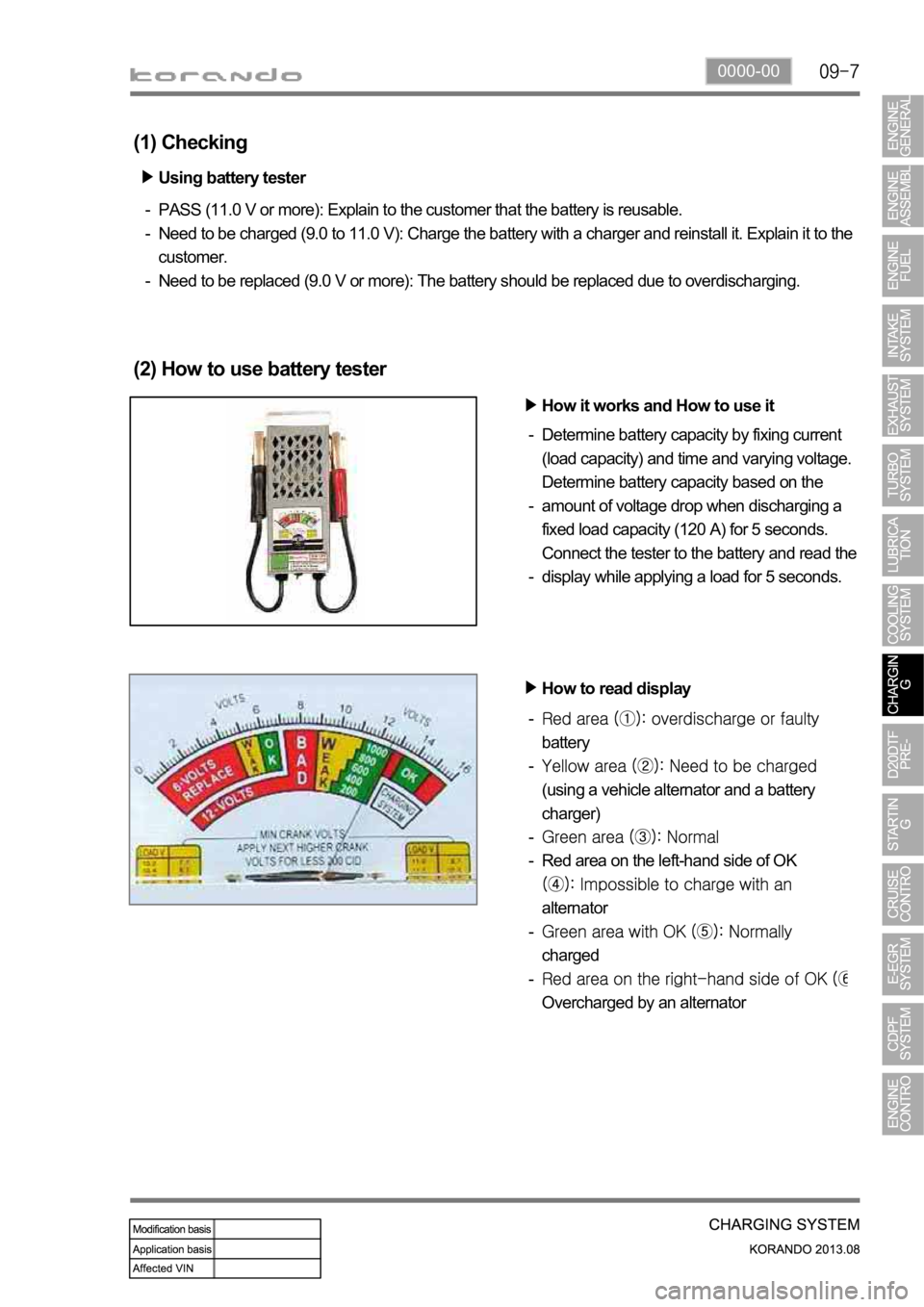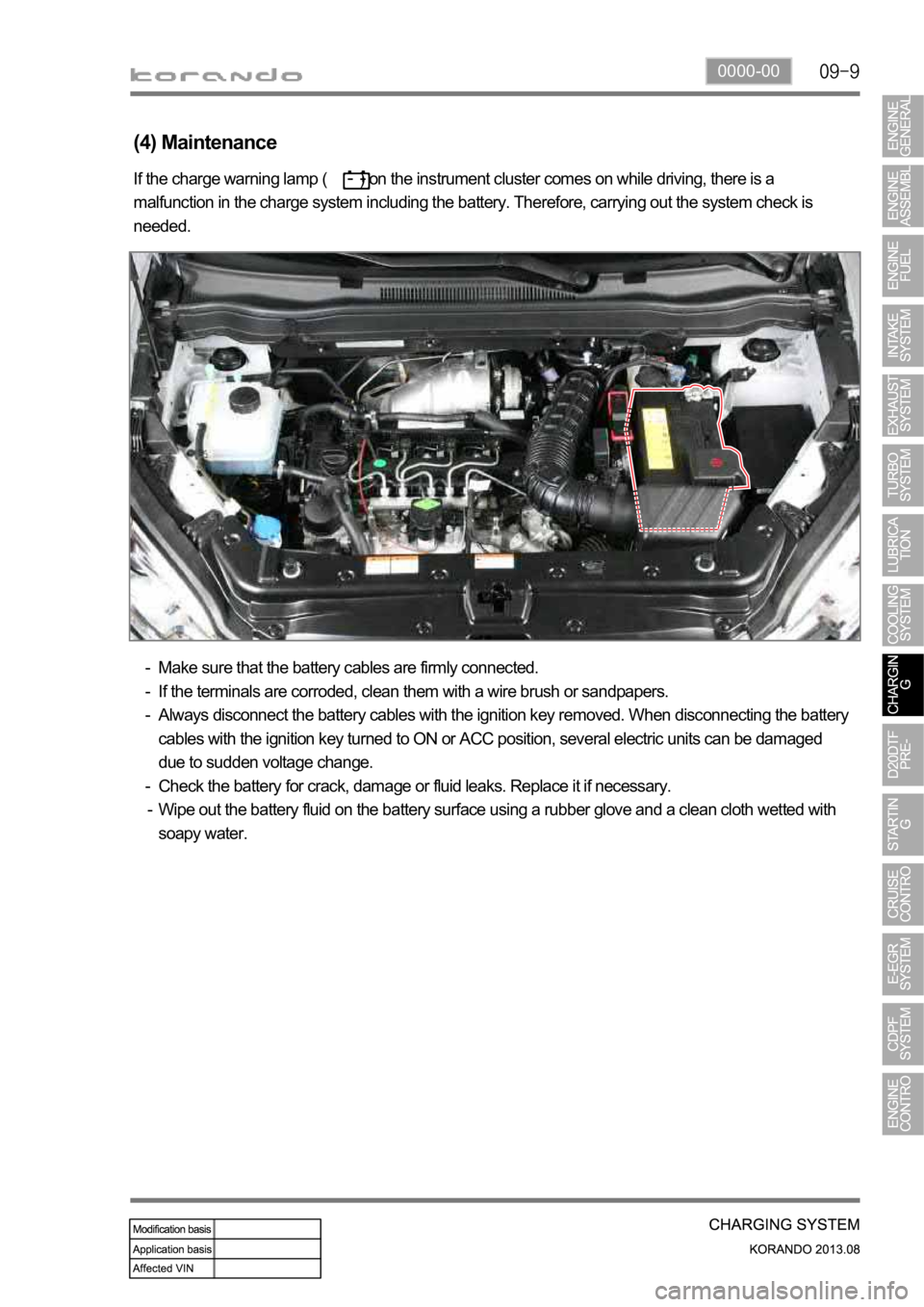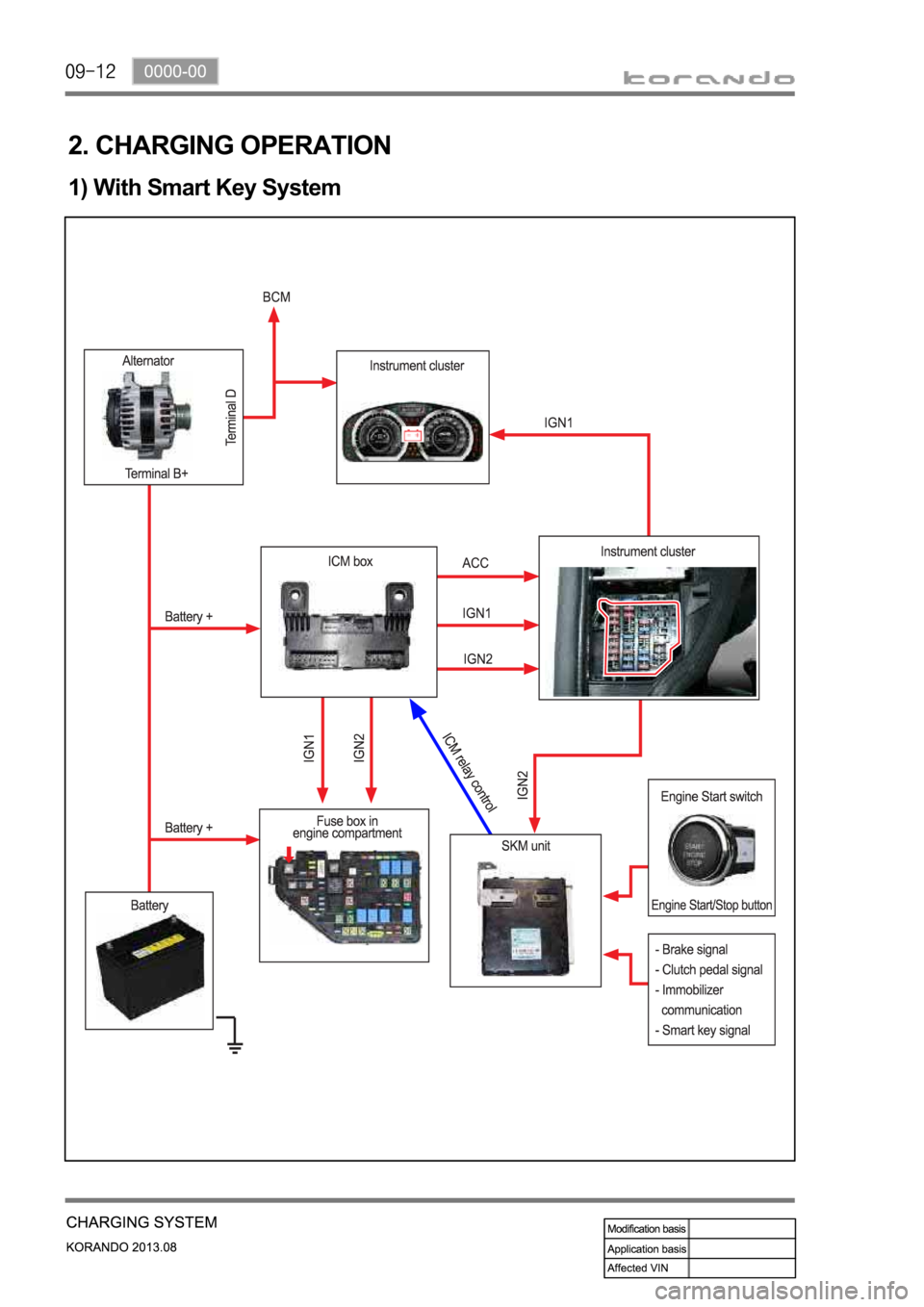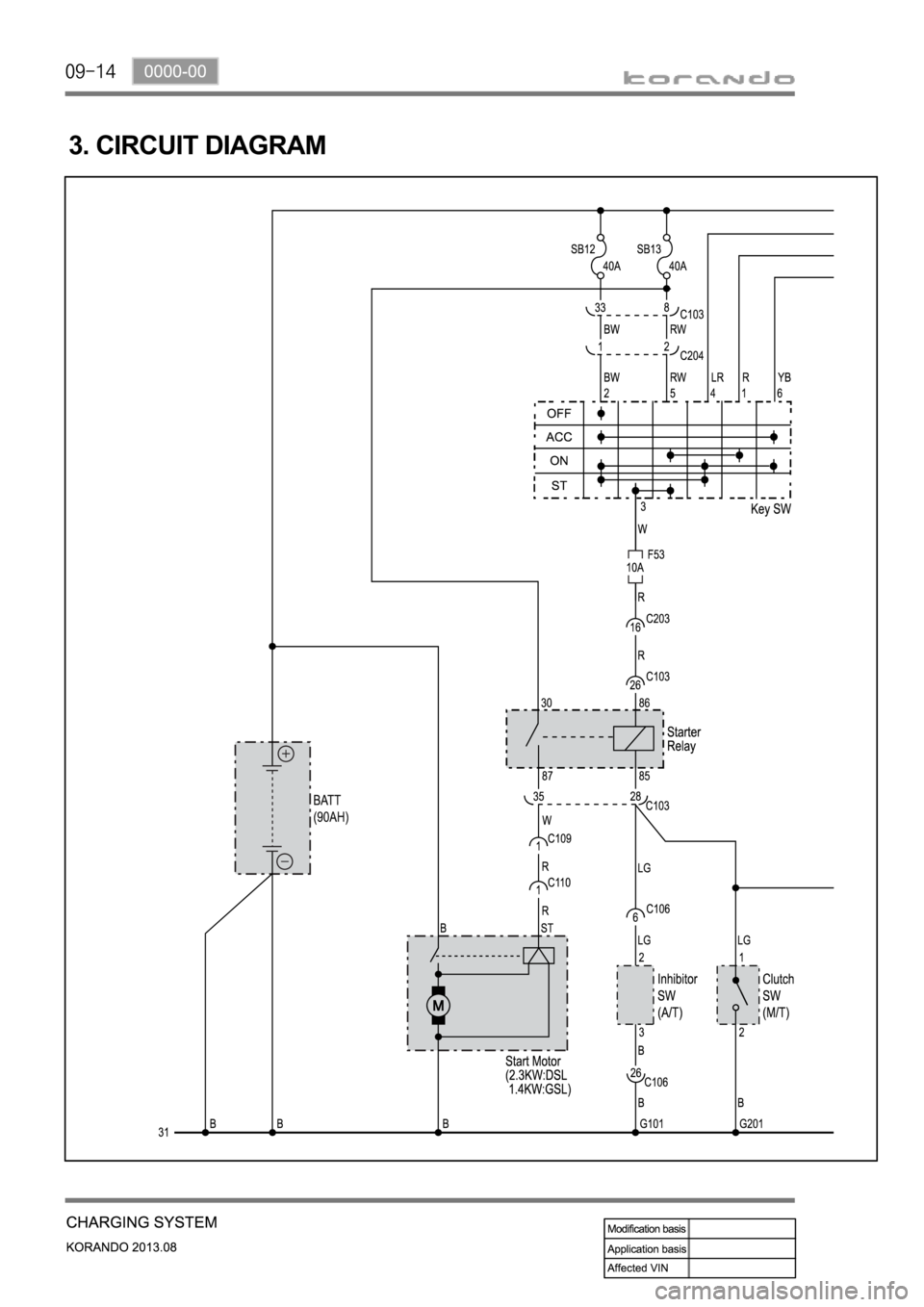SSANGYONG KORANDO 2013 Service Manual
KORANDO 2013
SSANGYONG
SSANGYONG
https://www.carmanualsonline.info/img/67/57503/w960_57503-0.png
SSANGYONG KORANDO 2013 Service Manual
Trending: engine oil, fuse box location, tow bar, automatic transmission fluid, fuel pressure, maintenance schedule, climate control
Page 311 of 1336
0000-00
(1) Checking
Using battery tester
PASS (11.0 V or more): Explain to the customer that the battery is reusable.
Need to be charged (9.0 to 11.0 V): Charge the battery with a charger and reinstall it. Explain it to the
customer.
Need to be replaced (9.0 V or more): The battery should be replaced due to overdischarging. -
-
-
(2) How to use battery tester
How it works and How to use it
Determine battery capacity by fixing current
(load capacity) and time and varying voltage.
Determine battery capacity based on the
amount of voltage drop when discharging a
fixed load capacity (120 A) for 5 seconds.
Connect the tester to the battery and read the
display while applying a load for 5 seconds. -
-
-
How to read display
battery
(using a vehicle alternator and a battery
charger)
Red area on the left-hand side of OK
alternator
charged
Overcharged by an alternator -
-
-
-
-
-
Page 312 of 1336
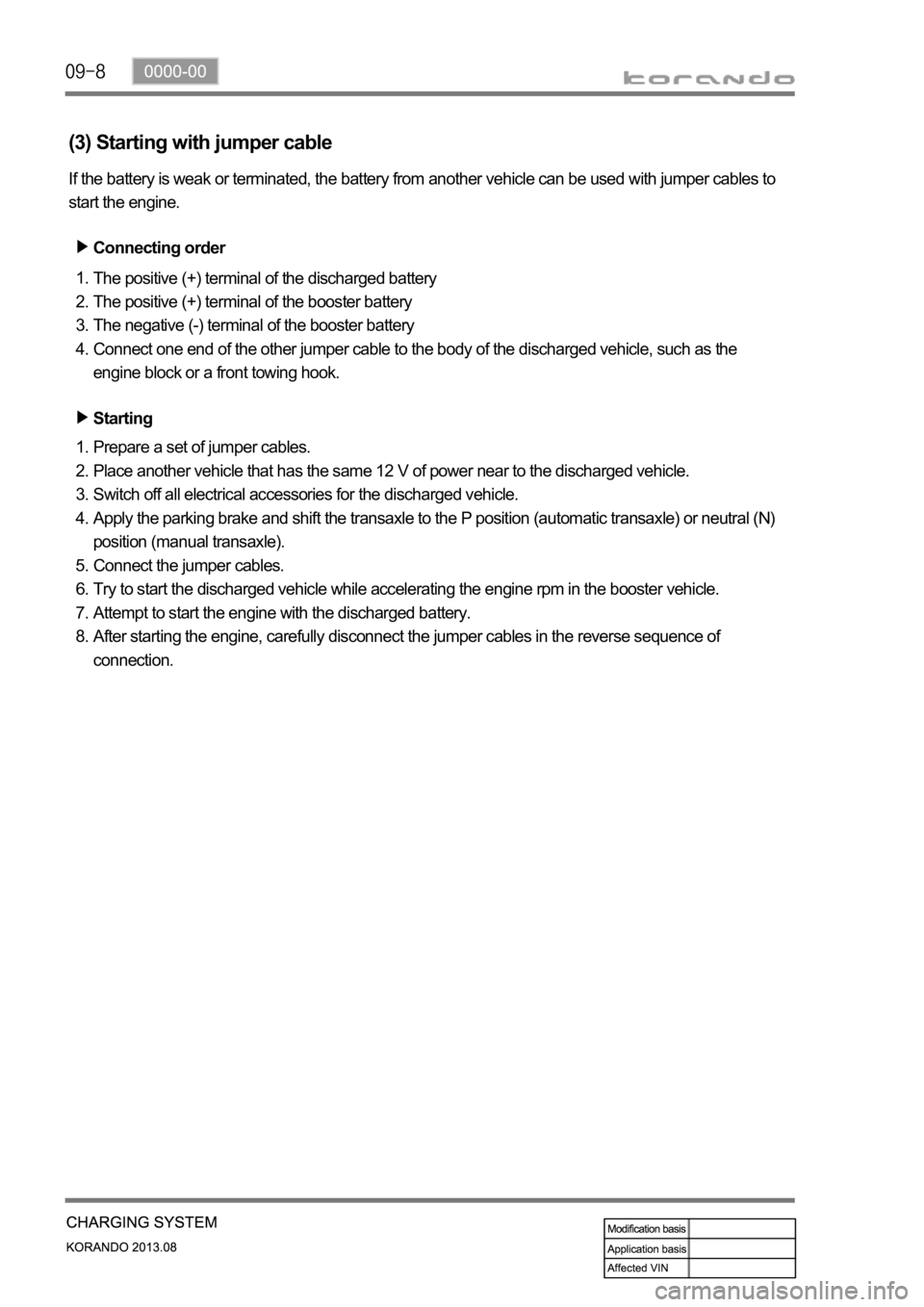
(3) Starting with jumper cable
If the battery is weak or terminated, the battery from another vehicle can be used with jumper cables to
start the engine.
Connecting order
The positive (+) terminal of the discharged battery
The positive (+) terminal of the booster battery
The negative (-) terminal of the booster battery
Connect one end of the other jumper cable to the body of the discharged vehicle, such as the
engine block or a front towing hook. 1.
2.
3.
4.
Starting
Prepare a set of jumper cables.
Place another vehicle that has the same 12 V of power near to the discharged vehicle.
Switch off all electrical accessories for the discharged vehicle.
Apply the parking brake and shift the transaxle to the P position (automatic transaxle) or neutral (N)
position (manual transaxle).
Connect the jumper cables.
Try to start the discharged vehicle while accelerating the engine rpm in the booster vehicle.
Attempt to start the engine with the discharged battery.
After starting the engine, carefully disconnect the jumper cables in the reverse sequence of
connection. 1.
2.
3.
4.
5.
6.
7.
8.
Page 313 of 1336
0000-00
(4) Maintenance
Make sure that the battery cables are firmly connected.
If the terminals are corroded, clean them with a wire brush or sandpapers.
Always disconnect the battery cables with the ignition key removed. When disconnecting the battery
cables with the ignition key turned to ON or ACC position, several electric units can be damaged
due to sudden voltage change.
Check the battery for crack, damage or fluid leaks. Replace it if necessary.
Wipe out the battery fluid on the battery surface using a rubber glove and a clean cloth wetted with
soapy water. -
-
-
-
-
If the charge warning lamp ( ) on the instrument cluster comes on while driving, there is a
malfunction in the charge system including the battery. Therefore, carrying out the system check is
needed.
Page 314 of 1336
Battery
It converts the chemical energy to the
electrical energy and supplies power to the
corresponding electric units when starting
the engine.Alternator
The alternator charges the battery and
supplies power to each electric unit by
converting the mechanical energy to the
electrical energy.
1. SYSTEM DESCRIPTION
1) Overview
The charge system is designed to supply electrical energy to the vehicle while driving, and supplies a
constant direct current voltage by converting mechanical rotational movement to electrical energy.
The voltage regulator on the back of the alternator controls the generated voltage in all rotating ranges
and adjusts the system voltage according to the electric load and ambient temperature change.
2) System Layout (Locations)
Page 315 of 1336
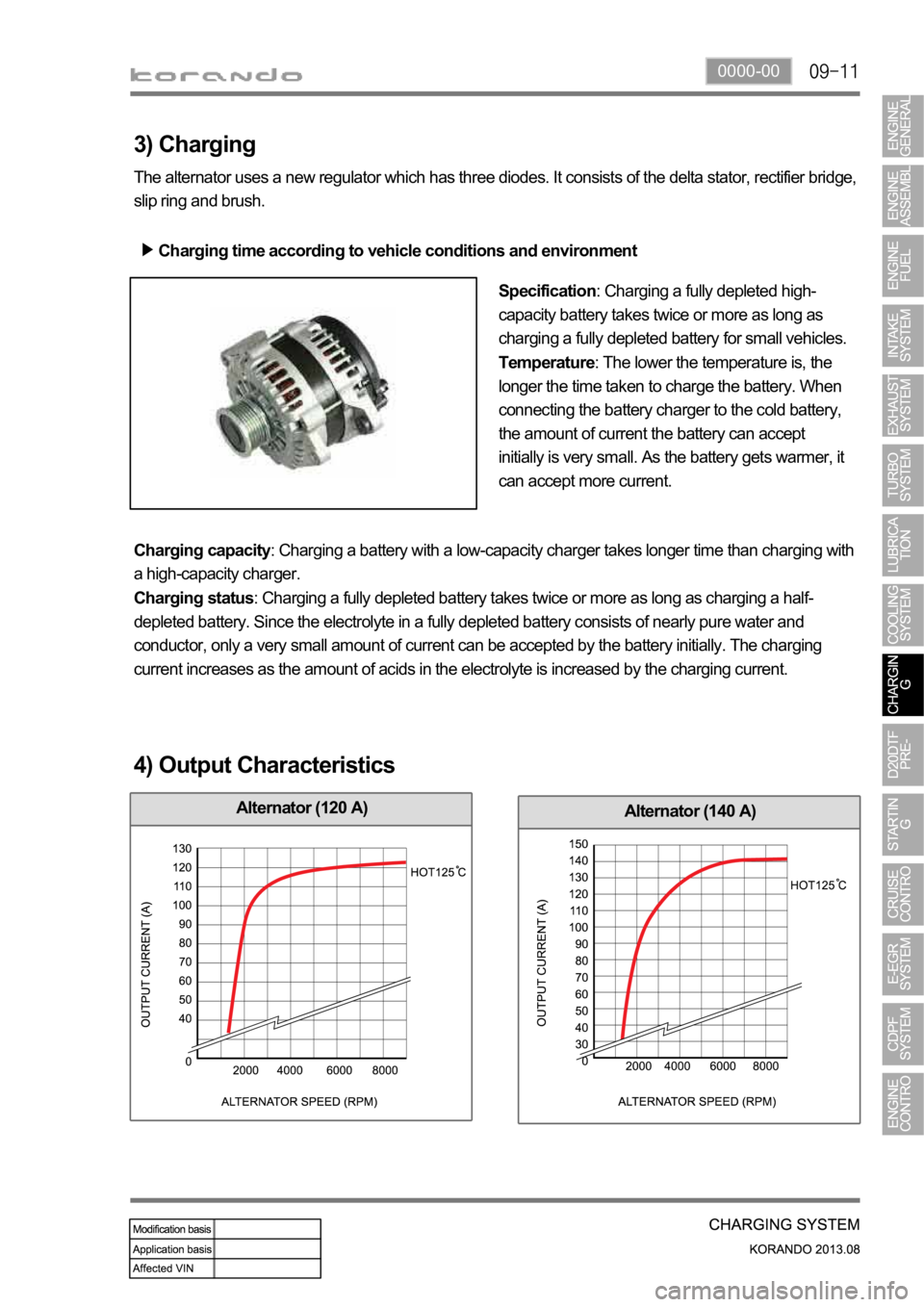
0000-00
Alternator (140 A)Alternator (120 A)
3) Charging
The alternator uses a new regulator which has three diodes. It consists of the delta stator, rectifier bridge,
slip ring and brush.
Charging time according to vehicle conditions and environment
Specification: Charging a fully depleted high-
capacity battery takes twice or more as long as
charging a fully depleted battery for small vehicles.
Temperature: The lower the temperature is, the
longer the time taken to charge the battery. When
connecting the battery charger to the cold battery,
the amount of current the battery can accept
initially is very small. As the battery gets warmer, it
can accept more current.
Charging capacity: Charging a battery with a low-capacity charger takes longer time than charging with
a high-capacity charger.
Charging status: Charging a fully depleted battery takes twice or more as long as charging a half-
depleted battery. Since the electrolyte in a fully depleted battery consists of nearly pure water and
conductor, only a very small amount of current can be accepted by the battery initially. The charging
current increases as the amount of acids in the electrolyte is increased by the charging current.
4) Output Characteristics
Page 316 of 1336
2. CHARGING OPERATION
1) With Smart Key System
Page 317 of 1336
0000-00
2) Without SMART Key System
Page 318 of 1336
Page 319 of 1336
Page 320 of 1336
1413-00
1. SPECIFICATION
Description Specification
Glow plug Rated voltage 4.4 V
Maximum temperature
Operating temperature
Glow plug control unit EMS operating voltage 6 to 16 V
Operating temperature
Dark current Max. 1 mA
Trending: phone, lock, automatic transmission fluid, alternator belt, adding oil, child restraint, TPMS reset
